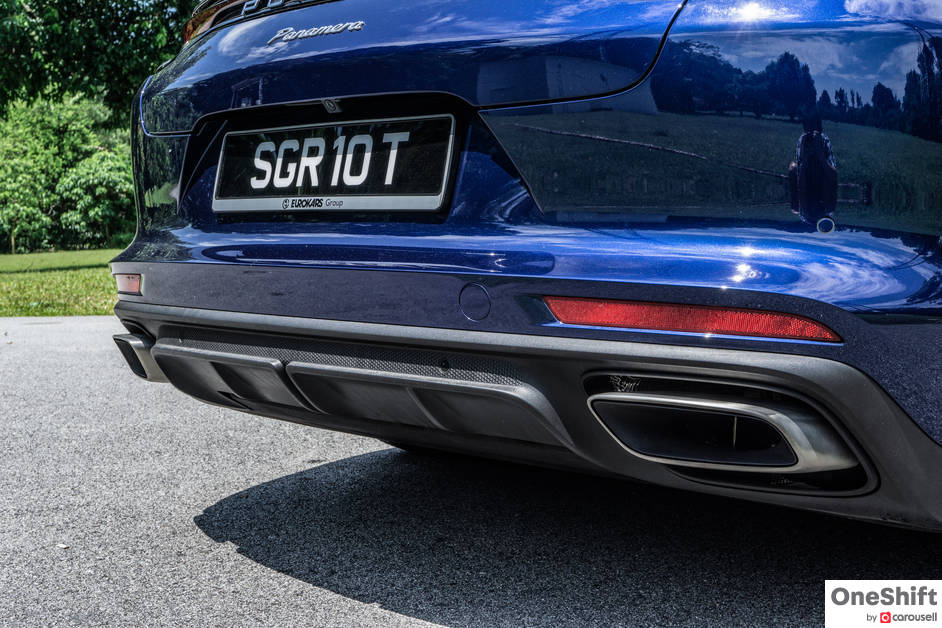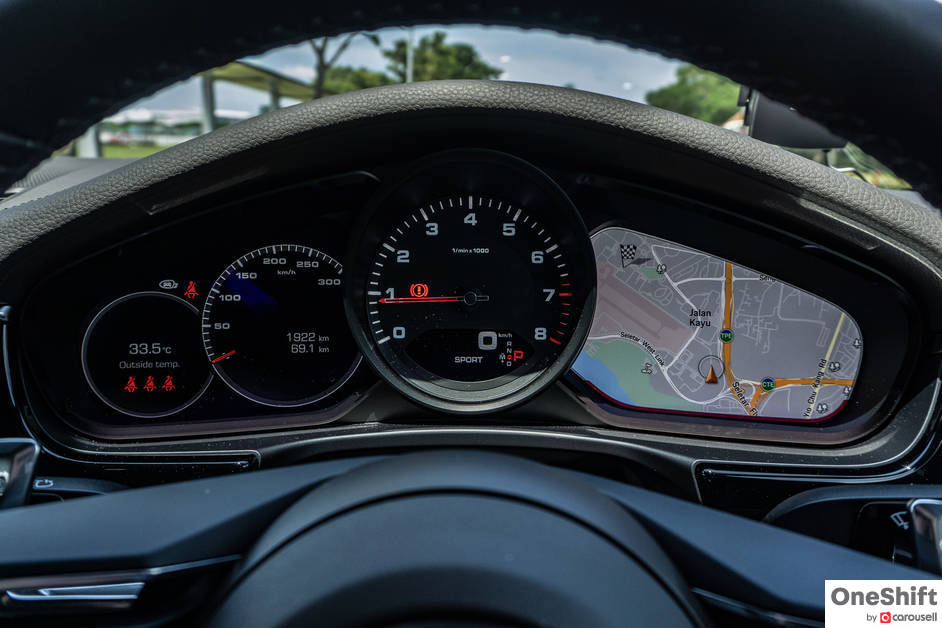Been To The Gym, But You Cant Tell
The facelifted Panamera may look similar from the outside as its older model, but don't be deceived - it has been significantly improved.


The G2 Panamera was widely recognised as an ugly duckling turned big beautiful swan, for Porsche’s head of design Michael Mauer finally managed to somehow fashion a 911 shape rather convincingly into a four door chassis. The car was a technical tour de force that somehow felt a bit too advanced for its time (screen-controlled automated AC vents, anyone?), perhaps launched a bit prematurely with not the usual Porsche quality standards.

Generally, “Generation 2” or facelifted Porsches tend to be heavily changed and can sometimes even be regarded as different cars behind the wheel. The facelifted Panamera, G2 II, was quietly launched in Singapore but you may be none the wiser as the car looks virtually similar outside save for some touch ups. Porsche likes to throw in freebies if you wait long enough, so the previously optional Sport Design front end is now standard. The rear light strip has been revised slightly too, but really, it looks like the same swan that we are now familiar with. Pity that the test car didn’t come with one of the newly designed 20 or 21 inch wheels (10 in total) which would do justice to its positioning.

But don’t be fooled as under the skin, it has been significantly improved as we are about to find out, like after a consistent and regular training regime at the gym.
The interior has been left virtually unchanged. It’s still the cosy, if a little claustrophobic place to be, with the low roofline and large body extrusions making one feel it is like peering out of a military pillbox. It helps that the test car has 4+1 seats (a S$3,389 option), which eases the space in the rear somewhat. It still has a high transmission tunnel though, so your least favoured passengers would take the middle seat.

Quality is very high, and the car feels like it was made for a geek who will pour hours to get the system to work to perfection. For most people though, the numerous haptic buttons and the countless menus on the infotainment may prove too much to use on a regular basis. The electronically adjusted aircon vents remain, a feature I thought would have been removed with the facelift. I guess Porsche still wants to make a statement with it.

There is a new steering wheel wrapped in smooth leather that has very tactile gearshift paddles, which enhances the experience just that bit more especially with the revised 8-speed PDK (more on that later).

Any Porsche’s forte is always the way it went down a road. The pre-facelift Panamera was impressive for its size and weight, but there were some apparent flaws like the 8-speed PDK that was not as smooth as the 7-speed PDK it replaced. The base car also had a 3.0-litre single twin-scroll turbo V6 that just misses the mark for charisma.

The facelifted base Panamera virtually fixed all the flaws of the older car. True to Porsche’s habitual tendency to keep improving things, they revamped the Porsche Active Suspension Management (PASM) system, the Porsche Dynamic Chassis Control Sport (PDCC Sport) and steering control system (Power steering plus is now standard).

All these tweaks unseen to the naked eye does wonders for the car; it now handles more sharply, having keener turn in and a new-found agility that would shame any of its full-size luxury counterparts. Ride is just as comfortable as before, but body control over challenging roads has been ramped up further, demonstrating Porsche’s unflappable ability to shrug off whatever you throw at it. Although not listed as one of the changes, I am certain the 8-speed PDK has been fettled with as well, for it feels quicker, snappier and more responsive. It is now a worthy replacement to the old box.

Best of all, the best-selling base Panamera perhaps stands to benefit Singaporean buyers the most - it now comes equipped as standard with the mighty 2.9-litre twin-turbo V6 that previously only came with the more expensive Panamera 4S. This is apparently so Porsche can rationalise its production line to produce only two instead of three engines, thereby reducing costs - a win win for the manufacturer and for you, the consumer!

Although differing only a few cc in displacement, the two engines could not be more different. The 2.9 is sonorous and punchy, puffing and heaving its superior twin-turbo setup ferociously. Although on paper it is detuned to produce exactly the same power and torque as the previous 3.0 (330 PS and 450Nm), with peak torque coming in later as well (1,340rpm versus 1,800rpm), it is purely academic behind the wheel. The new engine feels like it deserves to be in a Porsche and feels close to the pre-facelift Panamera 4S’s state of tune, thereby elevating the base Panamera to beyond its place in the pecking order.

One other thing about the base car is that it's the only one in the range that is rear-wheel drive. Paired with the sportier engine and more precise handling, the Panamera is a true joy to hustle down a B-road. Some window of oversteer is allowed, just enough so you know it is rear-driven and exploit this fact, yet the safety systems are well-judged so you are still kept well within the limits.

When the G2 Panamera was released, the sweet spot of the range was the Panamera 4S with its lovely 2.9-litre V6 that loves to be revved out to its redline, yet wasn’t too fast that you would be breaking speed limits easily. It seems the sweet spot has now moved downwards to the base Panamera, inheriting the 4S’s engine and still having a purer, lighter and arguably more fun rear-wheel drive layout. Although you can’t tell from the outside, the base Panamera is now the pick of the range.
Credits: Text and Photos by James Wong








Get the Best Price for your used car
from 500+ dealers in 24 hours

- Convenient and Hassle-Free
- Consumer Protection
Transparent Process
With No Obligation








